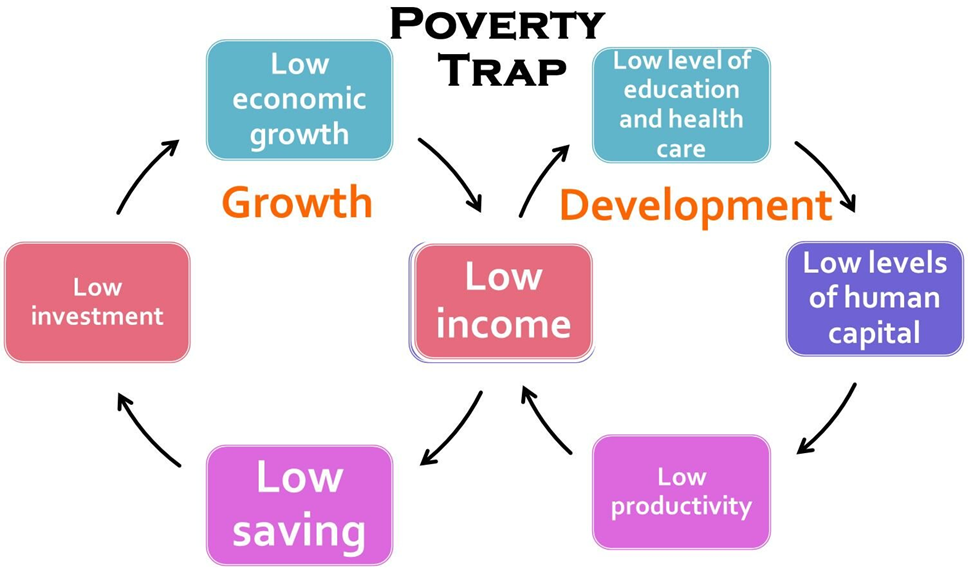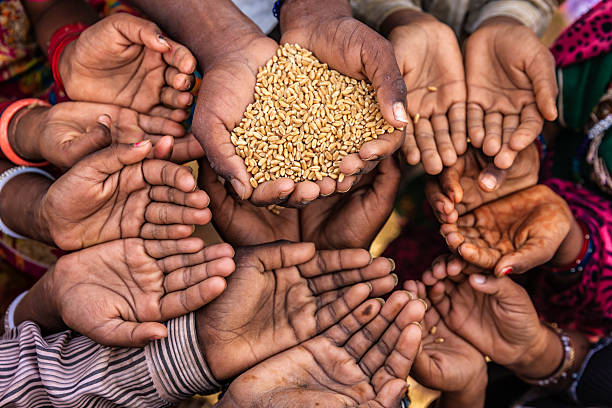Context:
Poverty extends beyond financial hardship—it is a complex reality marked by limited access to health, education, and basic living conditions. Recognizing that traditional measures of poverty, which often focus solely on income, don’t capture this depth, the Global Multidimensional Poverty Index (MPI) was introduced in 2010 by the UNDP and Oxford Poverty and Human Development Initiative.
· The latest 2024 MPI report presents a sobering view: despite decades of development, over 1.1 billion people worldwide still live in acute poverty, experiencing hardship in multiple areas essential for well-being. India, with 234 million people in multidimensional poverty, continues to face a significant challenge even as it makes strides in poverty reduction. This year’s findings underscore the need to look beyond income and address the wider range of factors that trap individuals and families in cycles of poverty.
· For policymakers, the MPI serves as both a measurement tool and a guide for action, highlighting where improvements in health, education, and living standards are most urgently needed. As we explore the implications of the 2024 MPI for India and beyond, it becomes clear that poverty alleviation requires targeted, multidimensional efforts that empower individuals and communities to rise above deprivation in all its forms.
The Concept of Multidimensional Poverty:
Traditional poverty measures, like income poverty, only considers financial deprivation. However, the Global Multidimensional Poverty Index (MPI), introduced by the OPHI and UNDP in 2010, redefines poverty by examining deprivations in multiple dimensions of life. This broader perspective includes a range of factors that, when absent, significantly impair quality of life, such as access to education, healthcare, and basic living conditions.
Structure of the Global MPI:
The Global MPI evaluates poverty across three main dimensions:
1. Health: Includes indicators like nutrition and child mortality, which reflect the well-being and survival prospects of individuals and households.
2. Education: Includes years of schooling and school attendance, indicating educational opportunities and potential for personal development.
3. Standard of Living: Encompasses indicators such as access to clean water, sanitation, electricity, housing, and cooking fuel, representing overall living standards.
Each dimension has a one-third weight in the final calculation, and each household is assessed across ten indicators. A person is classified as “MPI poor” if they experience deprivations in at least one-third of these indicators.

Key Highlights from the 2024 Global MPI Report:
1. Global Poverty: The report reveals that 1.1 billion people—approximately 18.3% of the population in 112 countries—experience multidimensional poverty. Out of this, 584 million are children, highlighting that poverty affects younger generations disproportionately, especially in regions where infrastructure, education, and healthcare are limited.
2. India's Position in Global Poverty: India has the largest absolute number of multidimensionally poor people, with 234 million individuals experiencing poverty. This figure, while significant, reflects progress compared to countries with lower HDI values, such as Niger, where multidimensional poverty is more widespread.
3. Poverty in Conflict-Affected Areas: Around 40% of multidimensional poor individuals live in regions affected by violent conflict. Conflict areas face severe disruptions to essential services, further exacerbating poverty and posing significant challenges to poverty reduction.
4. Improvement in India’s MPI Over Time: India has made substantial gains in reducing poverty. According to the UNDP, the MPI for India halved from 55.1% in 2005-06 to 27.7% in 2015-16, lifting around 271 million people out of multidimensional poverty. This progress underscores the impact of policies aimed at enhancing social, health, and educational services.
Global MPI vs India’s National MPI:
In November 2021, NITI Aayog introduced the National Multidimensional Poverty Index (MPI), which adapts the global MPI methodology to India’s unique socioeconomic conditions. Here are the key differences:
1. Indicator Count and Customization: The National MPI includes 12 indicators as opposed to the Global MPI’s 10. The additional indicators are:
o Maternal Health (under the health dimension), focusing on reproductive health access.
o Bank Account (under the standard of living dimension), reflecting financial inclusion in poverty metrics.
These additions recognize India’s specific developmental priorities, such as improving maternal health services and enhancing financial inclusion through accessible banking.
2. Data Sources and Surveys: India’s National MPI relies on data from National Family Health Surveys (NFHS) 4 and 5 (2015-16 and 2019-21, respectively). This data source allows the National MPI to better reflect regional disparities within India, helping tailor policies to address poverty at both the national and state levels.
3. Targeted Poverty Reduction: According to recent data, the National MPI shows a remarkable reduction in India’s poverty rate, from 29.17% in 2013-14 to 11.28% in 2022-23. Some states like Bihar, Uttar Pradesh, and Madhya Pradesh have seen notable improvements due to targeted interventions in health, education, and sanitation.
India's Multidimensional Approach to Poverty Alleviation:
· India’s National and Global Poverty Alleviation Goals: The National MPI serves as a robust framework to meet Sustainable Development Goal (SDG) 1: to end poverty in all its forms everywhere. By targeting multidimensional poverty, India’s policy framework aligns closely with international goals and adapts them to the country’s socioeconomic diversity.
· Regional and State-Level Interventions: With disparities in poverty levels across Indian states, the National MPI provides valuable insights for state governments to develop focused programs. For example, poverty reduction in states like Bihar and Jharkhand, which historically had high poverty rates, underscores the effectiveness of locally driven, multidimensional poverty alleviation strategies.
· Financial Inclusion and Maternal Health Focus: The addition of bank accounts as an indicator reflects India’s effort to bring the unbanked population into the financial system, promoting savings and access to credit. Meanwhile, addressing maternal health emphasizes reproductive and family health needs, which are crucial for sustainable poverty alleviation.
Conclusion:
The 2024 Global MPI provides a comprehensive view of global poverty, revealing significant challenges and areas of progress. India’s strides in poverty reduction, as shown in the National MPI, underscore the importance of multidimensional approaches to tackling poverty. By focusing on education, health, and living standards, India is gradually closing gaps in poverty, ensuring that its development agenda addresses more than economic deprivation alone. For UPSC aspirants, the MPI offers valuable insights into the evolving landscape of poverty measurement, policy formulation, and international cooperation in development goals.
|
Probable questions for UPSC Mains exam: Poverty alleviation programmes in India remain mere showpieces until and unless they are backed by political will. Discuss with reference to the performance of the major poverty alleviation programmes in India. |







